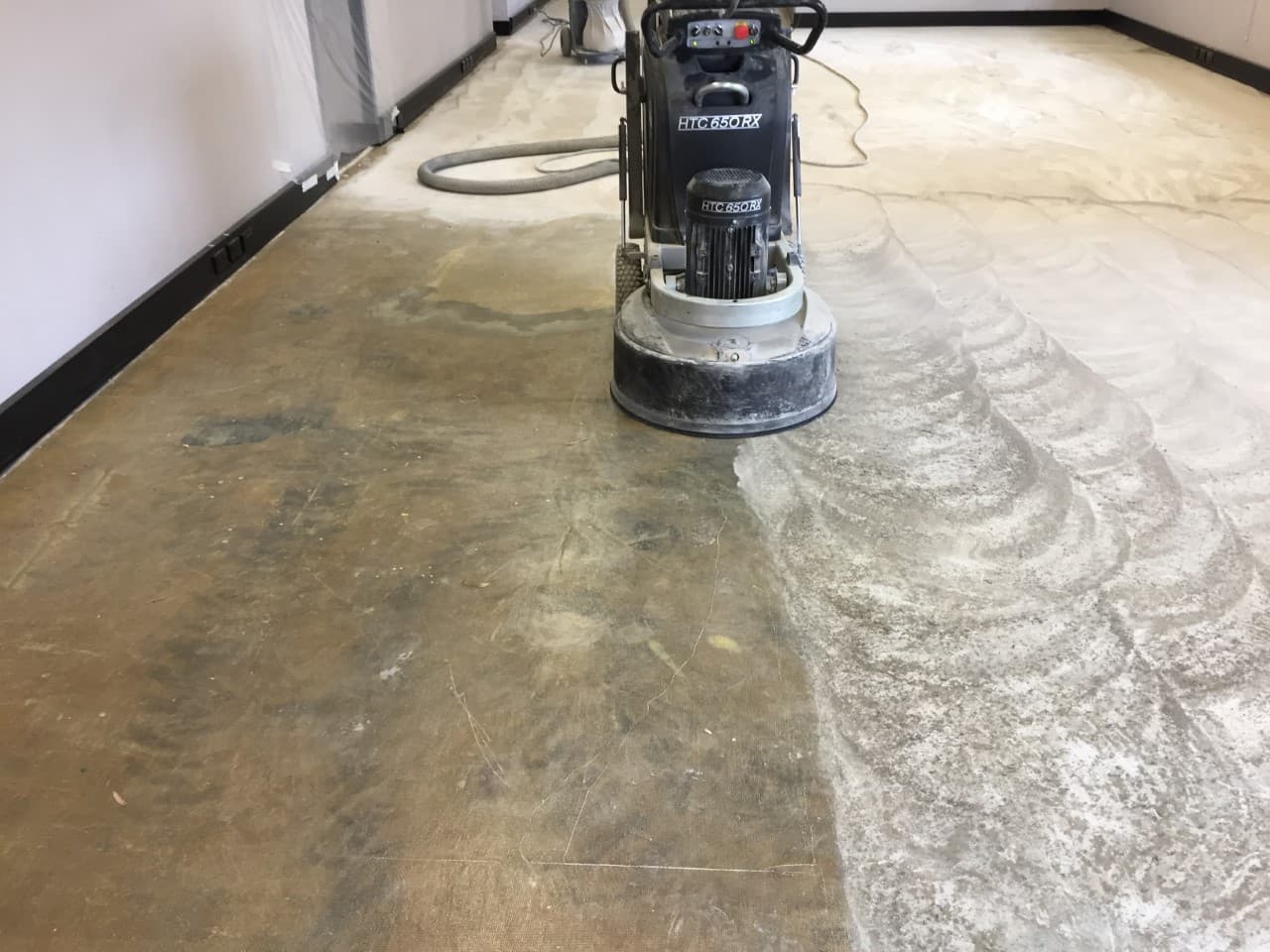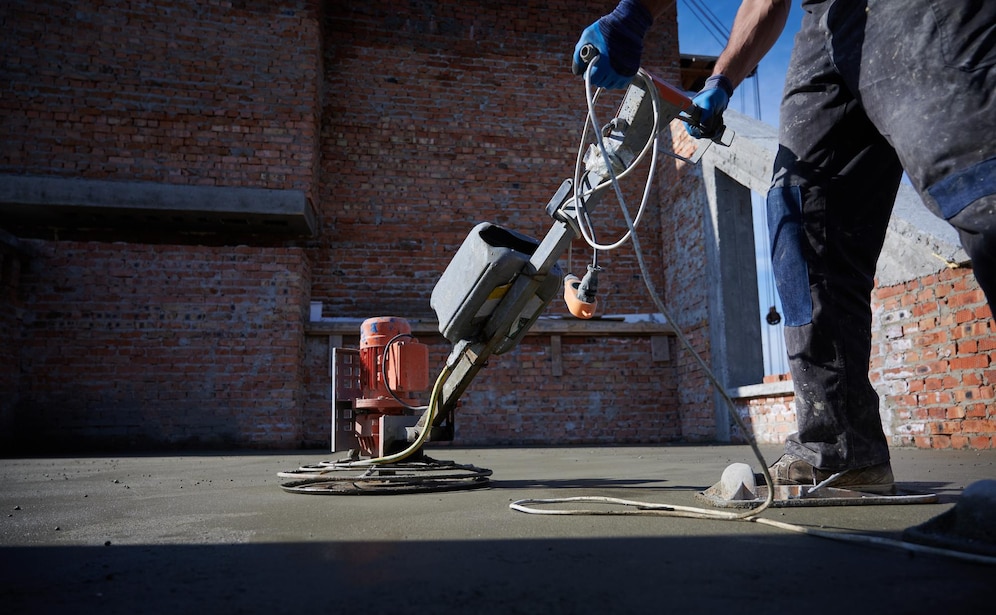
Whether you have a concrete garage floor, driveway, sidewalk, or patio that is beginning to show signs of wear, you have two options: demolish and remove the old surface, prepare the base, and build a new slab; or have concrete resurfacing done to restore the slab to its youthful appearance.
Occasionally, a concrete slab is either too unstable or too badly deteriorated to allow for resurfacing to be performed. The good news is that concrete resurfacing is an excellent alternative when the problem is only superficial cracking, discoloration, or slight chipping or spalling. Just about anyone can take on this project, and it’s significantly less expensive than having to replace the concrete slab entirely.
What is the Reason Why Your Concrete Gets Damaged?
Concrete is a porous material comprised of coarse granular aggregate material, water, and a binding agent such as cement. It is used to create a variety of structures. There may also be additives, such as minerals or chemical admixtures, to give the material a different appearance or texture. When dirt and moisture find their way into open spaces, whether during the installation process or thereafter, damage can occur to the structure. When water soaks into a mixture, it causes the liquid to divide into two halves.
It can expand and contract as a result of the addition of temperature fluctuations. In addition, abrasive elements might cause the components to fail. Chlorides, sulfates, and chemicals are examples of such substances. Concrete can be harmed by a variety of physical elements. Cracking or chipping can occur because of large things impacting it repeatedly or as a result of a single, blunt force impact.
Should You Entirely Replace Your Concrete or Have Concrete Resurfacing?
Traditionally, any type of damage, including minor ones caused by normal wear and tear, would be repaired by tearing up the current concrete slab and laying a new one. The most cost-effective alternative is to have concrete resurfacing. The following are examples of situations in which concrete resurfacing is appropriate:
- Minor Damage
- Wear and Tear
- Concealing surface flaws
- Minor surface cracks
- Discoloration
- Covering the concrete surface
- Making old concrete look new
With these situations, we recommend having your concrete surface examined by a qualified professional. More often than not, concrete surfaces do not require complete replacement but can be rejuvenated to seem as good as new with a simple revamp. There are a variety of alternatives available now that allow you to stencil, engrave, and even dye the concrete resurface to significantly improve the appearance of the surface.
How Does Concrete Resurfacing Work?
Depending on the origin of the damage, a variety of concrete resurfacing processes can be used to achieve success. First and foremost, the damaged portions must be eliminated. For this, specialized equipment such as grinders, chipping hammers, shavers, or shot blasters must be used in conjunction with the work being done. In the following step, the surface must be reshaped and filled in using self-leveling cementitious overlays, epoxy trowel downs, or other comparable materials. It is also critical to identify and address the root source of the problem. When the underlying cause is not addressed, the injury may recur.
How Is Concrete Resurfacing Done?
Essentially, concrete resurfacing is the process of cleaning and repairing concrete before overlaying it with a new surface. The following is a step-by-step breakdown of the procedures required in this concrete repair:
Cleaning.
A power washer is used to clean the old surface, removing dirt and grime from it.
Patching up the Cracks.
All of the cracks are primed and reinforced with fabric before being coated with polymer concrete that is smoothed down to match the rest of the concrete driveway.
Repairing Holes.
Epoxy mortar is used to fill in the gaps between the holes.
Covering the Slab.
After all of the repairs have been completed, the surface is primed and then covered with spray-on polymer concrete that is polished with a trowel to complete the job.
Coloring Then Sealing.
If you desire decorative coloring, it will be done next, followed by a seal coat that will protect the new surface from exposure to the outdoors.
Despite how extensive this may look, it is still more expedient and cost-effective than laying concrete for a whole new surface.
 Why Hire Floor Preparation Contractors?
Why Hire Floor Preparation Contractors?
Hiring a concrete professional who knows how to correctly create the mixture and has decorative finish knowledge can make the process much easier and better. You should also discuss the job’s equipment and materials with the pros. It’s critical to have a structural engineer inspect the foundation for soundness and stability. They will explain which cracks are ignorable, which can be repaired easily, and which require a contractor. Floor preparation contractors can also point out that cracks bigger than an eighth of an inch could indicate foundation issues, necessitating extra steps before installing anything. Of course, you could do it all yourself, but having pros do it could save you money. You never know with these materials.
Key Takeaway
There are numerous advantages to concrete resurfacing, in addition to the fact that it saves you money and completely transforms your old and worn-out concrete. On the whole, concrete resurfacing is less difficult than tearing up old concrete and starting it from scratch.
Although concrete is one of the most extensively utilised and long-lasting materials that can be acquired for use in the building industry, it is not without its restrictions. Concrete can disintegrate over time if it is subjected to extreme environments such as freeze-thaw periods, compounds used for melting ice, and traffic from heavy equipment. All of these factors can contribute to the degradation of concrete. However, not all indicators of damage warrant ripping out the entire concrete installation and starting over from scratch. Rehabbing something to its former glory may breathe new life into a great number of undertakings. If concrete is exhibiting symptoms of age, there are a few things to examine in order to assess whether or not the concrete needs to be completely replaced or whether or not it can be resurfaced. This will save both the contractors and their customers both time and money. Thus, here where we walk you through the decision process — concrete resurfacing vs. concrete replacement: the difference and the better option.
Concrete Resurfacing
The good news is that you might not be required to totally remove your old concrete in order to install a new and modern design, which is great if the thought of doing so appears inconvenient to you. You can save a significant amount of time and money by concrete resurfacing, which includes floors, walkways, and driveways.
Concrete resurfacing is a decent method that can be used to revitalise concrete that appears to be old and make it look new once more. Enhancing the livability of your home and adding value to it at the same time is not only possible, but also a cheap and sensible option.
Incorporating a decorative layer to your concrete is the core component of the concrete resurfacing process. In most cases, cement-based overlays or polymer-modified overlay systems are used to complete the procedure. Polymer-modified overlays are made by combining polymer resins with concrete, sand, and other additives. This improves the performance of the overlay as well as its resistance to wear and its overall appearance. The procedure and the items that are necessary will, to a very small extent, change depending on the type of surface that will undergo concrete resurfacing.
Concrete Replacement
The most extreme measure that can be taken with concrete is to remove the existing driveway and replace it with a brand new one. In this situation, you may not have a choice in the matter: if the layer has fractured all the way through and is exhibiting signs of fragility, this is the only alternative that is certain to keep you safe.
Clearly, selecting this course of action will result in the highest overall cost. On the other hand, if you are getting an entirely new driveway, this implies that you have the opportunity to change the form, size, and style of the driveway; for instance, you could accommodate additional cars or choose a different route.
Should You Resurface or Replace the Current Surface?
In the past, any form of damage, especially minor ones that were the result of normal wear and tear, would be mended by tearing apart the already-existing concrete slab and laying down a new one. However, when the damage is very minimal, it makes much more sense to be cost-effective and to save the resources that are available.
Concrete resurfacing is the finest option available, therefore you should go with it. The following are examples of circumstances in which concrete resurfacing is most beneficial:
- Minor damage
- Wear Out
- Covering up defects on the surface
- Repairing surface imperfections such as small fractures
- Fixing discoloration
- Putting anything over a concrete surface that is broken or unattractive
- Bringing a worn-out concrete finish up to date
Having said that, it is strongly suggested that you have a trained professional inspect the concrete surface of your property. The majority of the time, concrete surfaces do not need to be completely replaced; rather, they just need a revamp to make them appear as good as new. You may stencil, engrave, or even tint the concrete resurface now thanks to the many alternatives that are available. Doing any of these things will drastically improve the aesthetic of the concrete.
Now that you have landed on the decision of acquiring concrete resurfacing services instead of replacing it, you then proceed to every nook and crannies of it. And by this point, you might be pondering: when should you acquire concrete resurfacing services and what are the things you need to assess? Take out your pens and pads because you’ll have some note-taking to do!
When Should You Acquire Concrete Resurfacing Services?
Under ideal conditions, concrete would appear to be level and uniform in appearance. This suggests that the surface is successfully keeping water from penetrating the structure or is providing a firm foundation for the construction. There are different types of concrete flooring, each of which can withstand a different amount of pressure. For example, the floors of garages are routinely subjected to the weight of several automobiles. A concrete driveway might suffer the same fate if it were damaged in the same way. In addition, the majority of driveways do not have any sort of cover, which may increase the overall level of damage.
When exactly is it necessary to acquire concrete resurfacing services? Take into consideration the following scenarios:
1. Flaking
If concrete resurfacing is necessary, it will almost certainly be because of the way the floor appears. This will be the case whether or not concrete resurfacing is required. On the surface of the concrete, individuals should look for flaking as well as small pits. It is also a strong indicator that your concrete needs to be resurfaced if you notice any scratches on the paint or other coatings that you have applied.
2. The Flaking Off
It’s possible that people will take a closer look at the spalling on the surface of the concrete. As a result of its wrinkled appearance, this won’t be all that difficult to discover. The appearance of spalling points to the prevalence of water below the surface. It is common when individuals use wire mesh in the substructure, and it is even more common when the wire mesh is improperly stamped, which allows rust and corrosion to form. Another possible offender is salt, which is utilised in locations with colder temperatures in order to break up ice.
3. Fragmented Corners
The edges of concrete slabs are another major cause for concern since they are prone to cracking and deterioration, which is especially common on roadways and other areas subjected to a great deal of pressure from automotive traffic. People ought to examine the joints between the slabs to see if there are any issues like that. Check the edges of the surface to see if it is poured all the way through.
What Are Things You Need to Assess in Concrete Resurfacing?
1. Concrete Condition
Assessing the state of the concrete is the first thing that has to be done in order to figure out whether or not a concrete installation needs to be replaced or resurfaced. If a concrete slab is going to be considered for concrete resurfacing, it needs to have a solid foundation underneath it. Fissures as small as a human hair and chips in the concrete are usually signs of wear and tear that may be easily repaired. However, big cracks that go deep into the material are a leading indicator that it cannot be saved. In addition, concrete surfaces that are soft and scaling need to be removed using mechanical means to reveal a surface that is sound and solid before it can be resurfaced.
 2. Cause of Failure
2. Cause of Failure
Before incorporating concrete resurfacing on the area or pouring a new slab, it is necessary to locate and address the cause of the failure, which can only be done after the amount of the damage has been evaluated.
If the compacted base is damaged in any way, it will only be a matter of time before the newly poured section or the resurfaced area also fails. Damage to concrete that is produced by erosion or the washing away of soil as a result of water runoff is a typical and major cause of such damage; as a result, the affected area needs extra repairs. In addition to this, tree roots are known to cause significant damage to concrete. Before casting any new slabs, it is important to treat any wash out and remove any roots that may be present in order to guarantee that major damage is not caused.
Because of the placement or function of the slabs, some of them are just more prone to experiencing more significant wear and strain. Excessive point loads might cause damage. If the area below it is going to be subjected to significant traffic from commercial vehicles or heavy equipment like a roll off dumpster, then it is absolutely necessary for that region to be in good condition. Additionally, it’s possible that some regions will need repair more frequently than others.
Concrete Restoration Sydney
When it comes to concrete floors that are starting to show symptoms of wear and tear, EzyGrind believes that resurfacing concrete floors is the most economical alternative that can be considered. EzyGrind has developed a number of innovative coating solutions in order to give concrete floors an attractive appearance while still protecting their structural integrity. These coatings may be applied in a variety of ways.
In addition, if you are seeking for more floor services, we offer burnished concrete finish, salt and pepper concrete, concrete polishing, concrete honing, epoxy floor coating, and salt and pepper concrete. Visit our website if you would like a more in-depth look at the work that we do. Give us a call at this very now at 0410 223 300.
Get a quote for our concrete restoration services by filling out the form below:
